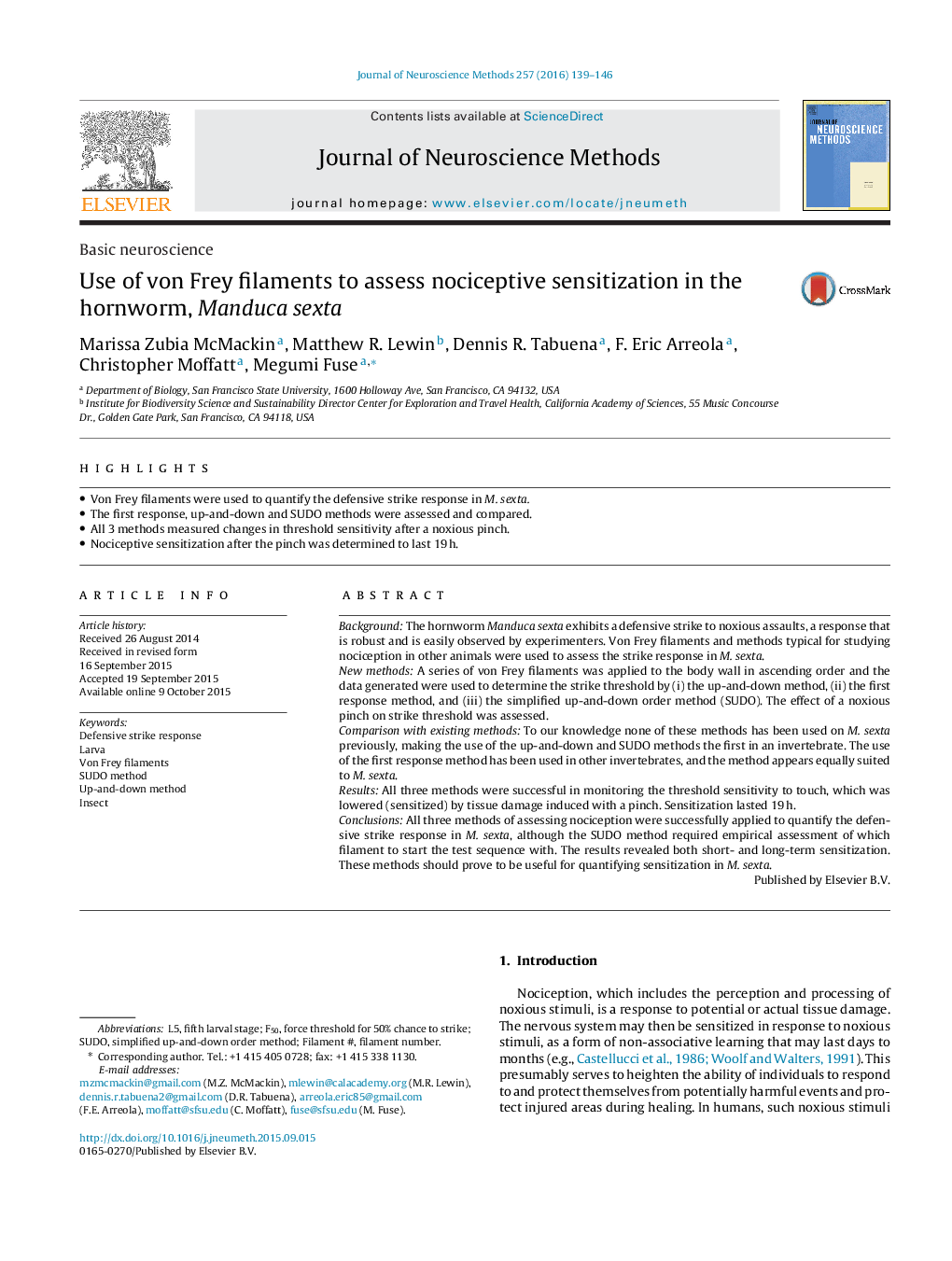| Article ID | Journal | Published Year | Pages | File Type |
|---|---|---|---|---|
| 6268096 | Journal of Neuroscience Methods | 2016 | 8 Pages |
â¢Von Frey filaments were used to quantify the defensive strike response in M. sexta.â¢The first response, up-and-down and SUDO methods were assessed and compared.â¢All 3 methods measured changes in threshold sensitivity after a noxious pinch.â¢Nociceptive sensitization after the pinch was determined to last 19 h.
BackgroundThe hornworm Manduca sexta exhibits a defensive strike to noxious assaults, a response that is robust and is easily observed by experimenters. Von Frey filaments and methods typical for studying nociception in other animals were used to assess the strike response in M. sexta.New methodsA series of von Frey filaments was applied to the body wall in ascending order and the data generated were used to determine the strike threshold by (i) the up-and-down method, (ii) the first response method, and (iii) the simplified up-and-down order method (SUDO). The effect of a noxious pinch on strike threshold was assessed.Comparison with existing methodsTo our knowledge none of these methods has been used on M. sexta previously, making the use of the up-and-down and SUDO methods the first in an invertebrate. The use of the first response method has been used in other invertebrates, and the method appears equally suited to M. sexta.ResultsAll three methods were successful in monitoring the threshold sensitivity to touch, which was lowered (sensitized) by tissue damage induced with a pinch. Sensitization lasted 19Â h.ConclusionsAll three methods of assessing nociception were successfully applied to quantify the defensive strike response in M. sexta, although the SUDO method required empirical assessment of which filament to start the test sequence with. The results revealed both short- and long-term sensitization. These methods should prove to be useful for quantifying sensitization in M. sexta.
